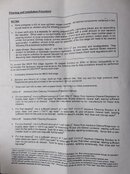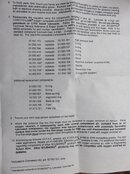I had an oops moment and got seawater in my first stage. I wouldn't worry too much except it is my deco reg. I have a spare standard service kit. Do I really need the official oxygen compatable kit and if so anyone got one they want to sell me at a reasonable price?
Its been functioning flawlessly but its been two years since the original service so if figured I would just do a full service since I needed to open it up anyway. But an inspection and cleaning may also be an option.
Opinions?
Thanks Guys
Just so you know, I have a friend with a MK20 I serviced almost 10 years ago and it's still working perfectly. IMO there's no reason to service your MK25 simply because it's had 2 years of use, especially as a deco reg, which I assume means fewer hours of use than your back gas regs. I guess it depends in part on the gas.
If you're using this reg for really high blends of O2, like close to 100%, the typical o-ring material is viton (flourocarbon) but Parker lists EPDM as similarly compatible with "cold oxygen". It's only high temp O2 where EPDM gets a poor rating. I also found another document about ignition temps for materials used with pressured O2 and flouroelastomers (viton) are listed at 600F, polyethylene at 360F. I don't know exactly where EPDM would fit in with the polyethylene.
I guess the point is, it looks like the difference between viton and EPDM o-rings for O2 use in scuba regulators is minimal. I also suspect, but I'm not certain, that the only difference between the MK25 standard and 'nitrox' kit is the use of viton vs EPDM o-rings. So I would use either.
I think dumpster diver's idea is a good one as long as you are confident that you can get the seawater out before it dries and corrodes the HP section of your reg. You could remove the seat retainer (leave the seat in the retainer) and DIN retainer, and that would give you better access to soak the parts most likely affected. You could also then inspect and clean or replace the filter.
One more bit of unsolicited advice; as long as you are self-servicing, you might consider getting a used MK2 for use with high O2 blends. The reason is that there is much less plastic and elastomer material for potential ignition. Keeping a MK2 O2 clean is extremely simple and economical, they last forever between rebuilds, no dynamic o-rings under high pressure, it's just an ideal O2 reg.






